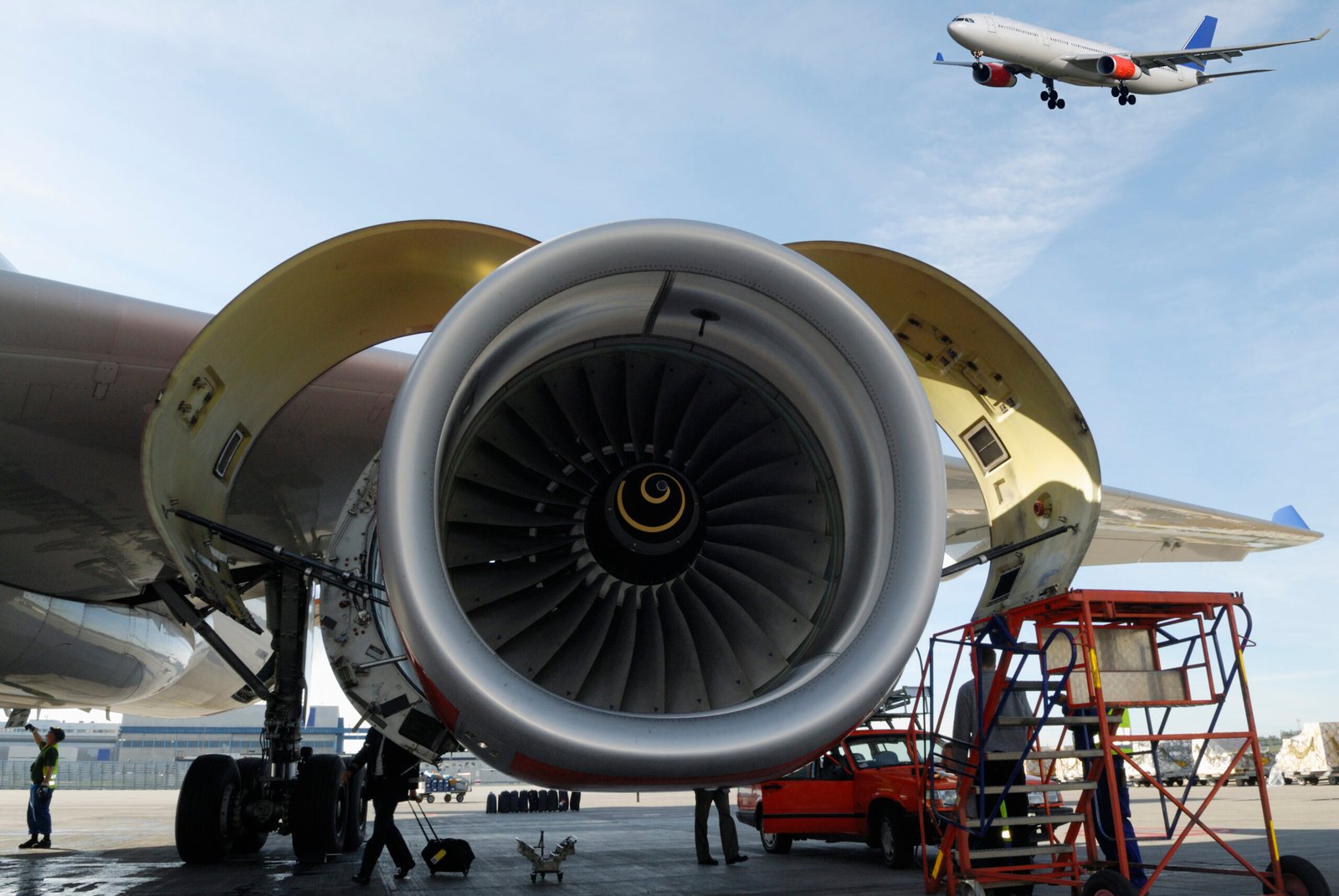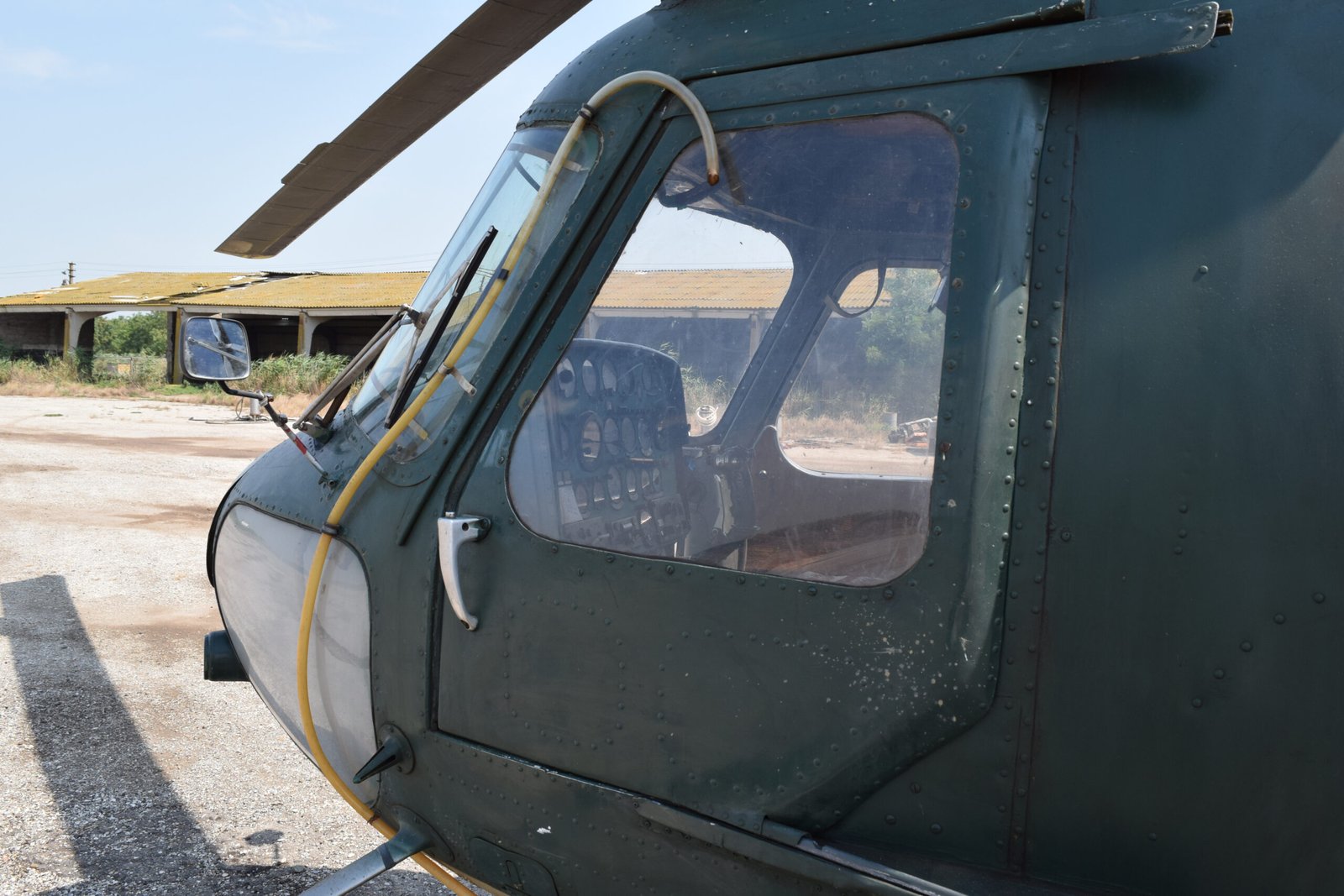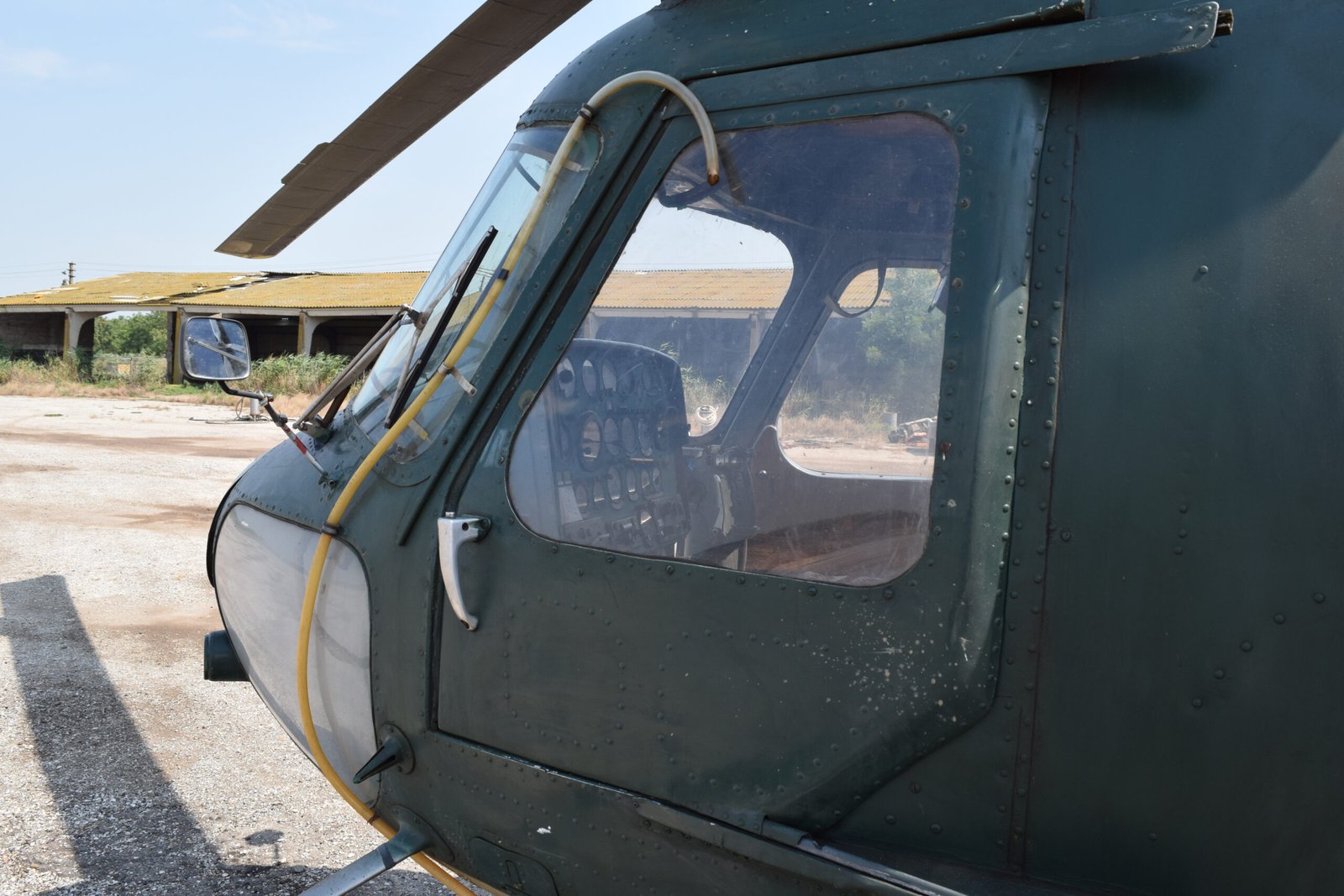poppanew
A Pilot’s Perspective: Adventures in the Skies
As the sun rises and casts a golden hue across the horizon, the thrill of flying beckons. For those of us fortunate enough to don a pilot’s wings, every ascent into the skies is an adventure waiting to unfold. But the journey to become a skilled aviator is paved with rigorous training, innovative technology, and continuous education.
Aviation has evolved dramatically over the past few decades. Today’s pilots are equipped with advanced tools and technologies that were once confined to science fiction. Flight simulators have taken center stage in pilot training, providing an immersive environment where aspiring aviators can hone their skills without leaving the ground. These high-tech devices replicate real-world flying conditions—complete with turbulence, weather changes, and emergency scenarios. Simulators not only save costs but also allow for repeated practice of critical maneuvers until they become second nature.

Alongside simulators, online resources for aviation enthusiasts and professionals abound. Several blogs and websites cater to pilots at all stages of their careers. Some notable mentions include “The Pilot’s Blog,” which shares personal experiences from aviators around the world, and “Flying Magazine,” offering insights into aviation news and trends. Social media platforms like Instagram and Twitter have become bustling hubs for pilots to connect; hashtags such as #PilotLife or #AvGeek draw in thousands sharing breathtaking aerial views or snippets from their cockpit adventures.
For those looking to formalize their aviation knowledge, numerous online courses and ground schools are available today. Organizations such as Gleim Aviation or King Schools provide comprehensive training programs covering everything from private pilot licenses to advanced certifications. The convenience of studying at home while balancing work commitments makes these programs incredibly appealing for aspiring pilots eager to take flight.
But let’s not forget about job opportunities within this dynamic industry! The demand for skilled aviators continues to rise as airlines expand operations globally. Pilots can find positions ranging from commercial airline jobs to corporate flying roles or even cargo transport services. Additionally, niche markets like agricultural aviation or aerial photography provide unique pathways for those looking to carve out a distinctive career in the skies.
We’re also witnessing a revolution courtesy of drones—a game changer in both recreational use and industry applications! From delivering packages to surveying landscapes, drones offer endless possibilities while requiring specific FAA regulations for operation. Pilots who venture into this realm must familiarize themselves with Part 107 rules governing commercial drone usage.
For anyone interested in exploring more about aviation regulations or seeking guidance on becoming a certified pilot, resources from the Federal Aviation Administration (FAA) are invaluable. Their website provides comprehensive information on licensing requirements, safety guidelines, air traffic control procedures, and much more essential data that any aspiring aviator should know.

In conclusion, being a pilot is more than just operating an aircraft; it’s about embracing technology through flight simulations while continuously learning through online courses and connecting with fellow aviation enthusiasts across various platforms. With evolving regulations surrounding drones and consistent demand for qualified professionals in commercial aviation, there’s never been a better time to pursue your passion for flying! So strap in—your adventure awaits high above the clouds!
From Runways to Skyways: The Impact of Airport Infrastructure on Global Travel
In today’s interconnected world, the aviation industry stands as a vital pillar of global travel. Behind the scenes, robust airport infrastructure plays a crucial role in ensuring that we can traverse continents within hours. But the story does not end with runways and terminals; it extends into technology training, online resources, and even the burgeoning field of drones. Let’s explore how these elements intertwine to shape modern travel.
At the heart of aviation’s evolution lies technology training. Modern pilots undergo rigorous simulations that replicate real-world flying scenarios without ever leaving the ground. Flight simulators are not just toys for aspiring aviators; they’re sophisticated tools that allow trainees to experience a variety of conditions and emergencies in a controlled environment. This level of preparedness is essential when you consider that safety is paramount in air travel.
For those eager to dive deeper into aviation knowledge, numerous blogs and websites serve as treasure troves of information. A few notable mentions include Flying Magazine, AirlineReporter.com, and The Points Guy. Each offers unique insights—from technical analyses of aircraft systems to tips for maximizing frequent flyer miles. Social media platforms also foster vibrant aviation communities where enthusiasts can share their experiences and expertise. Twitter accounts like @AviationWeek or Instagram profiles dedicated to aircraft photography provide daily doses of inspiration for both professionals and hobbyists alike.
If you’re considering embarking on a career in aviation, there’s never been a better time to take advantage of online courses and ground schools tailored specifically for budding pilots. Websites such as Pilot Institute offer comprehensive programs covering everything from private pilot certification to advanced instrument ratings—often at your own pace! These flexible options make it easier than ever to fit education into your busy schedule while pursuing your dream job.
The demand for skilled pilots continues to rise, driven by an uptick in global travel post-pandemic and an increasing number of airlines launching new routes. However, aspiring aviators must also stay abreast of regulatory requirements set forth by authorities like the FAA (Federal Aviation Administration). Their website is an invaluable resource for understanding licensing procedures, safety regulations, and ongoing training mandates.

As we look towards the future, one cannot overlook the growing influence of drones in both commercial applications and recreational hobbies. Drones are revolutionizing logistics—think about how packages zip through the skies instead of being stuck in traffic! This innovative technology has led regulators like the FAA to develop guidelines that ensure safe operation alongside traditional air traffic. For those interested in joining this dynamic sector, various online courses teach drone piloting fundamentals while covering regulatory compliance—a must-have skill set as this field expands rapidly.
With advancements continuing at breakneck speed across all facets of aviation—from new aircraft designs to evolving airport technologies—the industry’s landscape remains exciting and unpredictable. As travelers become more discerning about their experiences, airports will need to adapt accordingly by investing in modern amenities that enhance comfort while optimizing efficiency.
In conclusion, whether you’re soaring above clouds as a pilot or simply enjoying your travels below them, understanding how airport infrastructure impacts global travel enriches our appreciation for this incredible industry. With every takeoff and landing facilitated by cutting-edge technology and well-trained professionals—all made possible through rigorous training programs—we’re witnessing history unfold one flight at a time!
Unlocking the Skies: The Impact of Drones on Modern Aviation
In recent years, the aviation sector has undergone a seismic shift, largely driven by advancements in technology. Among these innovations, drones have emerged as game-changers, revolutionizing not only how we think about flying but also how we train future pilots and aviation professionals. This post delves into various facets of modern aviation, highlighting the influence of drones and cutting-edge training methodologies.
Let’s begin with the pivotal role that technology plays in pilot training. Traditional flight schools have embraced simulators to enhance learning experiences. These sophisticated devices replicate real-world flying conditions, allowing aspiring pilots to practice maneuvers without leaving the ground. Simulators enable students to confront challenging scenarios—like inclement weather or equipment failures—in a safe environment, which is integral for building confidence and skill.

For those eager to explore more about aviation or enhance their knowledge, numerous blogs and websites serve as treasure troves of information. Here’s a shortlist of some must-follow resources:
1. **AirlineReporter.com** – Offers insights into airline news and travel tips.
2. **FlyingMag.com** – A comprehensive source for general aviation enthusiasts.
3. **AvWeb.com** – Provides continuous updates on industry trends.
4. **ThePilotReport.com** – Features pilot stories and aircraft reviews.
5. **FliteTest.com** – Focuses on the fun side of flying with DIY drone projects.
Social media platforms are also rich with content for aviation aficionados. Twitter accounts like @AviationWeek provide breaking news while Instagram accounts such as @PilotLife showcase stunning aerial photography paired with personal narratives from pilots around the globe.
For those who prefer structured learning environments, online aviation courses and ground schools are increasingly popular options. Websites like Udemy and Coursera offer specialized courses ranging from basic aerodynamics to advanced navigation techniques—all from the comfort of home! Ground schools prepare students for FAA tests, covering essential topics such as flight regulations and meteorology.
As drones gain traction in both commercial and recreational realms, they are opening up new career pathways within aviation. Industries ranging from agriculture to real estate now employ drone technology for aerial surveys and inspections, creating a demand for certified drone operators. The FAA has established guidelines that govern drone usage in airspace management; thus understanding these regulations is crucial for anyone looking to enter this field.
If you’re interested in pursuing a career as a pilot or drone operator, it’s wise to stay informed about job opportunities available through platforms like Indeed or LinkedIn where many airlines post openings regularly.
For regulatory insights, visit [FAA.gov](https://www.faa.gov), which provides extensive resources related to licensing requirements for pilots as well as guidance on operating drones safely within U.S airspace.
Embracing innovation is key in today’s fast-paced world of aviation where both manned aircraft and unmanned aerial vehicles (UAVs) coexist harmoniously. Drones not only facilitate new operational efficiencies but also inspire creativity across sectors—pushing boundaries previously thought impossible.
To conclude, unlocking the skies involves leveraging technological advances while fostering an engaged community through education—be it via traditional flight training supplemented by simulators or expanding knowledge through diverse online resources. As we continue navigating this transformative era in aviation history, one thing remains clear: embracing change will propel us all higher than ever before!
Flight Paths: How Aviation is Shaping Global Connectivity
In an era where the world feels smaller than ever, aviation plays a pivotal role in knitting together distant regions, cultures, and economies. The advancements in technology not only enhance safety and efficiency but also shape the future of global connectivity. As we soar through the skies, let’s explore how aviation technology training, online resources, and emerging trends like drones are revolutionizing this industry.

Aviation technology has come a long way since the days of wooden biplanes. Today’s pilots rely heavily on sophisticated simulators that replicate various flying conditions and scenarios. These state-of-the-art training tools allow aspiring aviators to hone their skills without leaving the ground. Simulators provide a risk-free environment for learning, enabling pilots to navigate thunderstorms or emergency situations while receiving real-time feedback from instructors. This shift towards virtual training is not just cost-effective; it enhances safety by ensuring that pilots are well-prepared before they take to the skies.
For those looking to delve deeper into aviation beyond traditional flight schools, a plethora of online courses and ground schools are available at your fingertips. Platforms such as Coursera and Udemy offer specialized courses covering everything from aerodynamics to air traffic control principles. The flexibility of these programs allows individuals to learn at their own pace while balancing other commitments—perfect for those aspiring to become certified pilots or aviation professionals.
In addition to formal education, staying informed about industry trends is crucial for anyone passionate about aviation. A wealth of blogs and websites can serve as invaluable resources for insights into current events, technological advancements, and career advice within the field. Some notable mentions include:
1. **AirlineGeeks.com** – Provides up-to-date news on airlines around the globe.
2. **ThePointsGuy.com** – Focuses on travel tips and maximizing loyalty points.
3. **FlyingMagazine.com** – Offers expert reviews on aircraft along with pilot stories.
4. **PPRune.org** – A popular forum among pilots where they share experiences and advice.
5. **AviationWeek.com** – Delivers in-depth analysis of aerospace developments.
Social media platforms also play a significant role in connecting aviation enthusiasts worldwide. Twitter accounts like @AeroNewsNet keep followers updated on breaking news, while Instagram profiles such as @PilotLife showcase stunning aerial photography alongside glimpses into a pilot’s daily life.

As we explore further into modern aviation landscapes, drones are proving transformative—opening new avenues for connectivity and commerce while raising questions about regulations and airspace management. Drones have found applications beyond mere recreational use; industries such as delivery services, agriculture, surveillance, and even emergency response have started integrating unmanned aerial vehicles (UAVs) into their operations.
For those intrigued by this burgeoning sector or considering a career in piloting drones commercially, it’s essential to understand FAA regulations governing drone usage. The Federal Aviation Administration provides comprehensive resources online that cover licensing requirements for remote pilots (Part 107 certification), safety guidelines for drone operation, and tips for navigating airspace restrictions.
So whether you’re an aspiring pilot eager for knowledge or simply a curious traveler keen to understand more about our interconnected world through aviation—there’s never been a better time to get involved in this dynamic field! With technology advancing rapidly alongside educational opportunities expanding infinitely—aeronautical dreams can be transformed into reality faster than ever before! Embrace your passion today; who knows where your flight path may lead?
A Bird’s Eye View: The Evolution of Commercial Aviation
The skies have always captivated humanity, and the evolution of commercial aviation has transformed our world in remarkable ways. From the early days of flight to today’s high-tech aircraft, advancements in technology and training have played a pivotal role in shaping the industry.
One area that has seen tremendous growth is aviation technology training. Modern pilots are no longer solely reliant on hands-on experience; they now hone their skills using advanced flight simulators. These sophisticated devices replicate real-life flying conditions, allowing aspiring aviators to practice maneuvers and troubleshoot emergencies without ever leaving the ground. Training programs incorporate various scenarios, from routine take-offs to challenging weather conditions, ensuring pilots are well-prepared for anything that may come their way.
For those looking to delve deeper into aviation knowledge, there’s an abundance of resources available online. Numerous blogs and websites cater to enthusiasts and professionals alike. Websites like AirlineReporter.com and TheAviationist.com offer insights into industry news and trends, while FlightGlobal.com provides comprehensive analysis on global aviation developments. Social media platforms also abound with aviation content; Twitter accounts such as @AviationWeek deliver timely updates, while Instagram is bursting with stunning aerial photography capturing the beauty of flight.
Moreover, online aviation courses have revolutionized how individuals pursue their passion for flying or seek careers in this dynamic field. Ground schools now offer flexible options for students around the globe—be it through interactive modules or live sessions with seasoned instructors. These courses cover essential topics ranging from navigation and meteorology to regulations governing airspace usage. They provide a solid foundation for aspiring pilots who wish to turn their dreams into reality.

In addition to traditional pilot roles, commercial aviation offers a variety of job opportunities within its expansive ecosystem. Whether you aim to be a commercial airline captain or an air traffic controller guiding flights safely through busy airspace, the demand for skilled professionals continues to rise. Resources such as FAA.gov serve as excellent starting points for understanding licensing requirements and career paths available in this field.
As we traverse further into this decade, one cannot overlook the impact of drones on the future of aviation. Once merely a novelty gadget for hobbyists, drones are now essential tools across numerous industries—from agriculture monitoring to disaster response efforts. The FAA is actively involved in regulating these unmanned aircraft systems (UAS), ensuring safety standards are met while promoting innovation within this burgeoning sector.
To stay informed about changes affecting both manned and unmanned flight operations, it’s vital to keep up with official resources like FAA links that provide updates on regulations and new technologies entering the market.
The trajectory of commercial aviation showcases not just technological marvels but also our collective ambition as humans striving for progress. Whether you’re an aspiring pilot mastering your skills through simulators or someone exploring drone technology’s potential impact on our lives, there’s never been a more exciting time to engage with this vibrant industry.
From ground school courses laying down foundational knowledge to blogs offering daily nuggets of wisdom about contemporary issues facing aviation today—the possibilities are endless! So fasten your seatbelts; we’re just getting started on this exhilarating journey through the skies!




